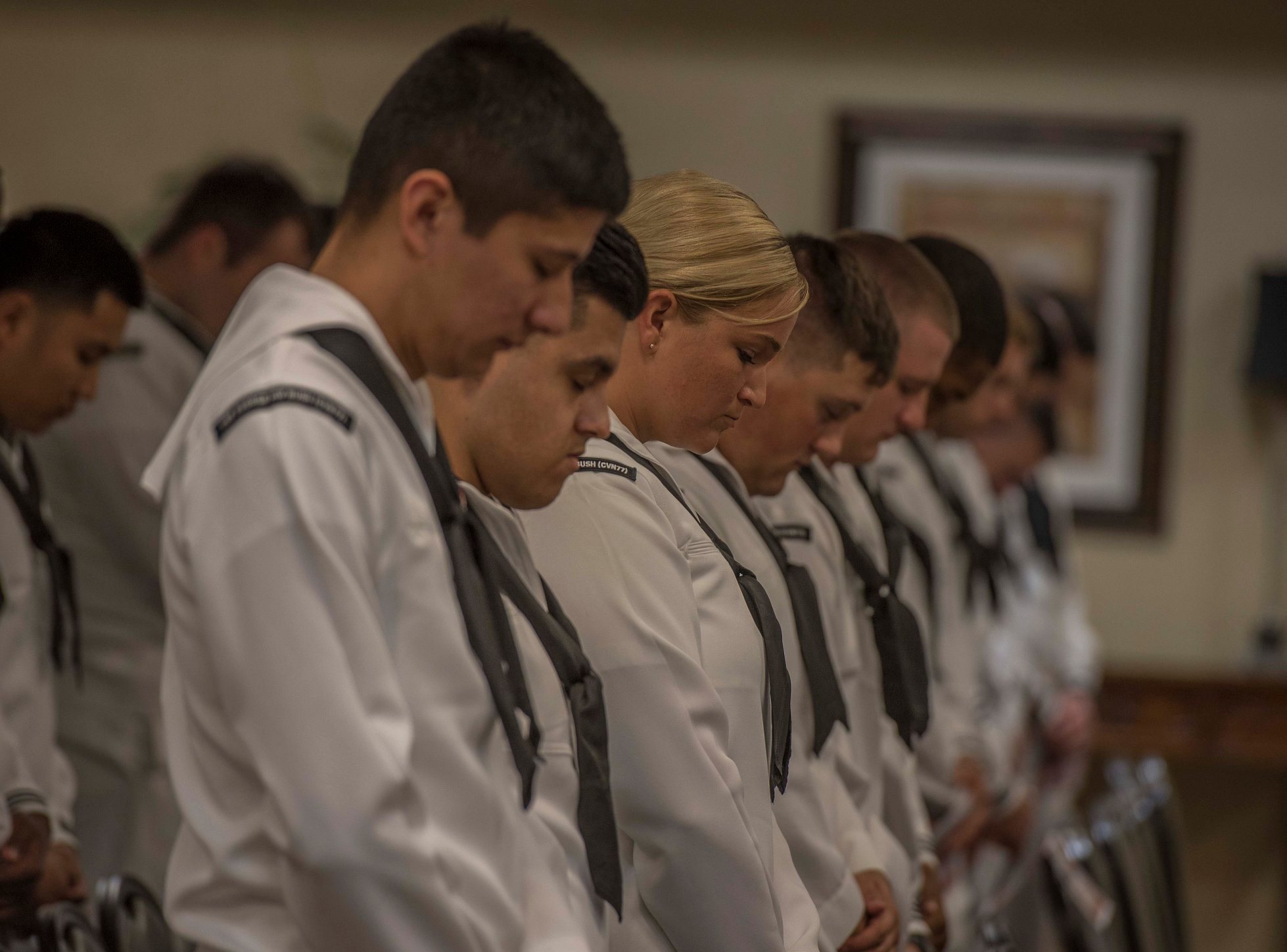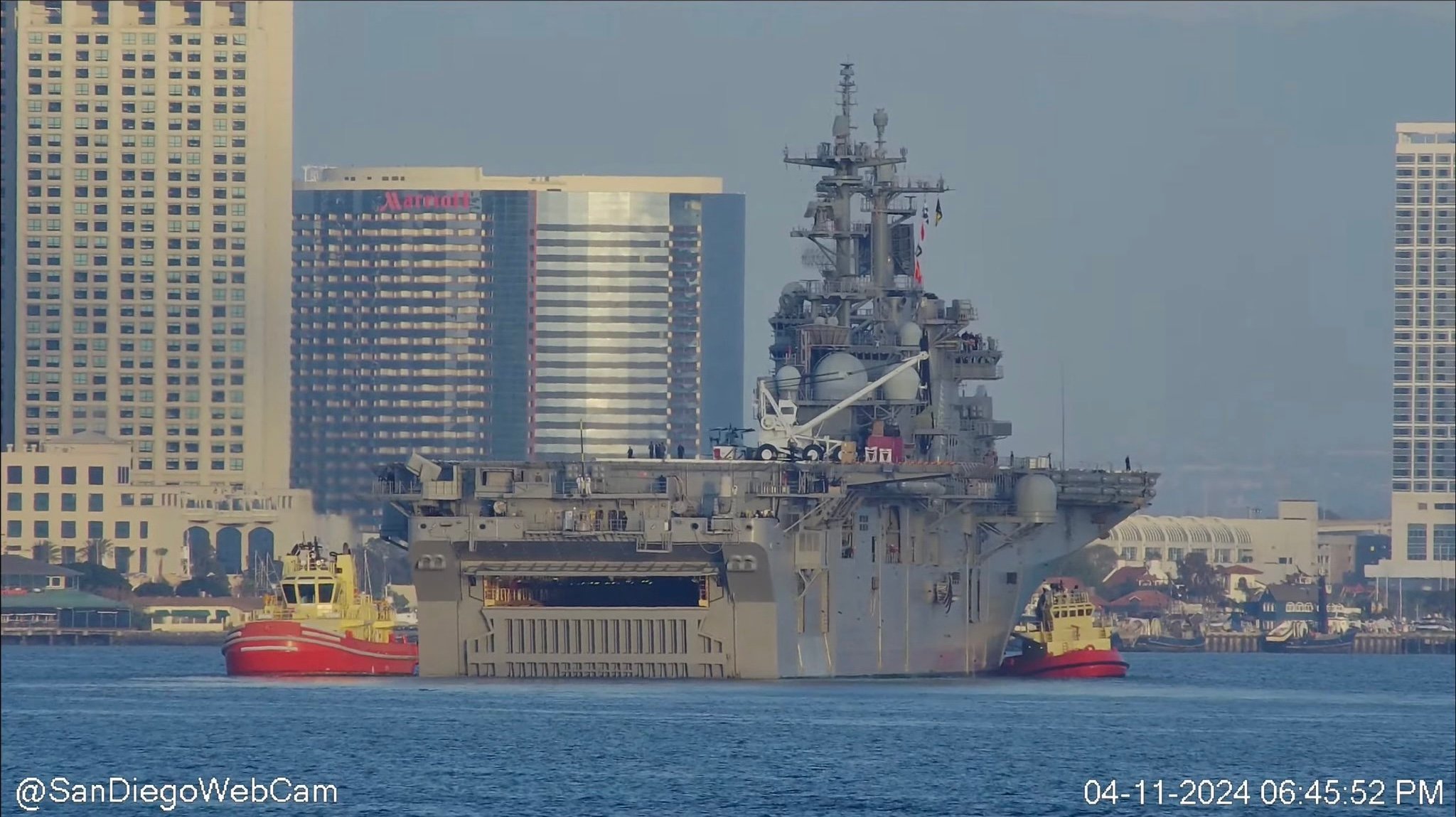
Three sailors from USS George H.W. Bush (CVN-77) took their lives last week, the ship’s commanding officer confirmed to the crew and community in a Facebook post late Monday.
Capt. Sean Bailey, Bush’s commanding officer, posted a note expressing his sadness over what has been an especially challenging time for the crew.
“Avengers, Family, and Friends, It is with a heavy heart that I can confirm the loss of three Sailors last week in separate, unrelated incidents from apparent suicide. My heart is broken,” Bailey wrote. “These deaths mark the third, fourth, and fifth crew member suicides in the last two years. Now is the time to come together as a crew and as a family to grieve, to support each other, and to care for those in need.”
Bailey did not identify the sailors who took their own lives in his message.
A Navy spokesperson acknowledged a Monday night request for comment from USNI News but did not immediately provide a resposne.
News of deaths comes as the Navy is facing its third year of higher-than-normal rates of suicide. The Navy will likely finish 2019 with roughly the same suicide rate reported for 2017 and 2018, even as the service works to revamp how it addresses suicides.
As of Sep. 5, the Navy reported that 46 active duty service members had taken their lives in 2019. A year ago, the Navy had reported a similar number of suicides, according to a report from Navy Personnel Command.
The Navy’s 2018 active duty suicide rate of 20.1 per 100,000 service members is in line with what the other service branches experienced. The 2018 rate was a slight decrease from the Navy’s 2017 rate of 21.4 per 100,000 service members, according to the data from the service.
In comparison, the Marine Corps’ suicide rate among active duty personnel was 30.7 per 100,000, according to the Marine Corps. The Air Force suicide rate was 18 per 100,000, and the Army suicide rate was 29.8 per 100,000 for the year, according to the Department of Defense.
For the Navy, after starting the decade with a suicide rate tracking closer to the national average, which is lower than in the military, the service’s suicide rate now appears to be more in line with the rates reported by other service branches. The Navy has launched several programs to make sailors and their commands aware of suicide prevention resources available, USNI News reported in April.
The service has focused on training command leaders, including medical personnel, department heads, legal staffs and chaplains to spot signs an individual could be experiencing a stress event. The Navy is also encouraging personnel to use free private sector resources that are accessible at off-hours, from home and from remote duty locations.
Identifying an individual considering suicide is extremely difficult. The vast majority of suicides do not have predictors, according to statistics collected by the Department of Defense Suicide Event Report for 2017. The Pentagon has not released the 2018 report.
In 2017, of the 69 active duty personnel who committed suicide, 19 individuals communicated their intent either verbally or in writing; the rest did not communicate at all, according to the report. Only 16 individuals left notes about their actions. Also, 20 individuals have accessed outpatient mental health care at some point during the three months leading up to their suicide. Five individuals had received in-patient mental health care.
Suicide Prevention Resources
The Navy Suicide Prevention Handbook is a guide designed to be a reference for policy requirements, program guidance, and educational tools for commands. The handbook is organized to support fundamental command Suicide Prevention Program efforts in Training, Intervention, Response, and Reporting.
The 1 Small ACT Toolkit helps sailors foster a command climate that supports psychological health. The toolkit includes suggestions for assisting sailors in staying emission ready, recognizing warning signs of increased suicide risk in oneself or others, and taking action to promote safety.
The Lifelink Monthly Newsletter provides recommendations for sailors and families, including how to help survivors of suicide loss and to practice self-care.
The Navy Operational Stress Control Blog “NavStress” provides sailors with content promoting stress navigation and suicide prevention:
NavStress social media:
Facebook: www.facebook.com/navstress
Twitter: www.twitter.com/navstress
Flickr: www.flickr.com/photos/navstress
The following is a copy of the full Facebook post from Capt. Sean Bailey, commanding officer of USS George H.W. Bush (CVN-77)
Avengers, Family, and Friends,
It is with a heavy heart that I can confirm the loss of three Sailors last week in separate, unrelated incidents from apparent suicide. My heart is broken.
These deaths mark the third, fourth, and fifth crew member suicides in the last two years. Now is the time to come together as a crew and as a family to grieve, to support each other, and to care for those in need.
We need All Hands to engage by bringing forward your suggestions and ideas for how we can work together to prevent another suicide. I want to reiterate that there is never any stigma or repercussion from seeking help.
Chaplains, psychologists, counselors, and leadership are engaged and available on board at all times to provide support and counseling to those grieving. I ask that you watch a closely for stressors that anyone is experiencing when they face a significant life change such as:
- Relationship problems
- Personal or professional loss
- Recent career transitions
- Financial difficulties
- Disciplinary / legal issues
Please continue to respect the privacy of the families during this difficult time. Speculating or spreading false stories is not helpful and disrespectful of the families and crewmates who are suffering from these losses.
Help is always available. If you find yourself in need, call the Suicide Hotline number at 1-800-273-TALK (8255) or Military OneSource at 1-800-342-9647. You can also text “home” to the Crisis Hotline at 741741. Asking for help and supporting those who reach out is a sign of strength and resilience and never viewed negatively.
This is the time when we need to come together as a crew and as a family to support each other and care for those in need.
Very Respectfully,
CAPT Sean Bailey
Commanding Officer
USS George H. W. Bush (CVN 77)





